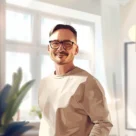The recent approval of the draft United Nations Convention Against Cybercrime marks a pivotal moment in the effort to combat cybercrime on a global scale. This treaty is being touted as a landmark effort to establish a unified international response to cyber threats, but it has also sparked substantial debate over human rights implications and the potential for misuse by repressive regimes. While the terms of the draft treaty aim to foster global consensus on the categorization and prosecution of cybercrime, critics worry that the legislation could also pave the way for human rights infringements.
A Global Need for Cyber Crime Standardization
Cybercrime is a rapidly growing threat that knows no borders. With cyber attacks increasing in frequency and sophistication, the need for international cooperation is pressing. The treaty aims to create a global framework for defining and prosecuting cybercrimes, which includes offenses such as unauthorized access to information and communications technology (ICT) systems, data interception, technology-enabled fraud, and more. In a world where digital infrastructures are intertwined and global connectivity is the norm, the pressure to harmonize legal responses to cyber threats is undeniable.
However, achieving consensus on what constitutes cybercrime has been challenging. Different countries have diverse legal systems, cultural norms, and levels of technological advancement, making standardization complex. The treaty represents an effort to bridge these differences by providing a baseline of agreed-upon offenses and procedural powers, encouraging nations to adapt these standards within their domestic laws. This foundational approach aims to create a more cohesive mechanism to combat cyber threats globally, but these differences also bring up challenges in uniform interpretation and execution of the treaty’s mandates.
Legislative Requirements and Their Implications
The treaty mandates that nations criminalize accessing ICT systems without authorization, with an allowance for countries to specify intent, such as dishonest or criminal motives. Beyond this, it requires the criminalization of altering electronic data, intercepting private communications, and other malicious cyber activities. These requirements focus on promoting robust legal frameworks within each nation to effectively prosecute and prevent cybercrimes, providing a systematic method to handle escalating cyber threats.
One critical aspect of these requirements is the need for nations to build judicial capacities to handle new types of evidence and investigations. Without proper training and oversight, there is a risk that electronic evidence may be mismanaged or deemed inadmissible in court, complicating prosecutions. This need for capacity building and legal reform presents both a challenge and an opportunity for improving global cybersecurity. Countries will have to invest in state-of-the-art technology and training for their legal and investigative teams to ensure they can meet the treaty’s standards and efficiently process cybercrime cases.
Human Rights Concerns and Debates
The broad scope of the treaty has raised significant concerns about human rights. Critics argue that without adequate safeguards, the powers granted to law enforcement could be misused by governments to suppress dissent, curtail free speech, and engage in international espionage. The provision allowing nations to reject mutual legal assistance requests based on discriminatory reasons is seen by some as insufficient protection against abuses. This fear of potential overreach is particularly resonant in countries with a history of human rights violations.
The debate extends to the balance between security and privacy. With increased monitoring and data interception capabilities, there is a fear that individuals’ privacy rights may be compromised. These concerns are particularly relevant in nations with a history of human rights abuses, where the treaty’s provisions could be used to justify crackdowns on journalists, activists, and political opponents. Without rigorous oversight and clear guidelines, the broad legislative reach of the treaty may usher in an era where security measures trample upon individual freedoms and civil liberties, posing significant ethical and legal dilemmas.
Reactions from the International Community
Global reactions to the treaty are mixed, reflecting the diverse priorities and concerns of different nations. Countries like the United States have welcomed the draft, emphasizing the importance of continued efforts to combat human rights abuses. On the other hand, nations such as Iran and Russia have expressed reservations, with Iran seeking to remove human rights protections entirely and Russia arguing that the focus on human rights is excessively restrictive. These differing perspectives underscore the complexity involved in formulating a treaty that can reconcile the varied interests and legal landscapes of the international community.
These differing perspectives highlight the challenge of creating a treaty that satisfies all parties. While some nations push for stronger human rights clauses, others argue for more leeway in enforcing their domestic laws. This tension underscores the complexity of establishing a treaty that balances security needs with the protection of civil liberties. Harmonizing these divergent views into a cohesive and effective treaty will be a test of diplomatic acumen and international solidarity, with the potential to set a precedent for future international collaborations on cyber law.
Implementation Challenges and Future Prospects
The recent approval of the draft United Nations Convention Against Cybercrime marks a crucial step in the global fight against cybercrime. This treaty is being hailed as a significant effort to create a unified international response to cyber threats. However, it has also ignited a considerable debate over its potential impact on human rights and the risk of abuse by authoritarian regimes. The main aim of the draft treaty is to build global consensus on how to categorize and prosecute cybercrimes. Supporters see it as a necessary move to keep up with the ever-evolving nature of cyber threats, providing a framework for nations to collaborate and ensure cybercriminals face justice.
On the flip side, critics are concerned that the treaty might be used by oppressive governments to legitimize crackdowns on political dissent and free expression under the guise of combating cybercrime. They worry that the broad definitions and powers granted in the treaty could lead to human rights violations, such as surveillance, censorship, and wrongful prosecution of activists or critics. The debate highlights the challenge of balancing security and liberty in the digital age.









